Genz Benz STREAM LINER 600 User manual
- Category
- Home audio sets
- Type
- User manual
This manual is also suitable for

Owner’s Manual
PRODUCT DESCRIPTION – The new Streamliner™ 600 bass amplier has been manufactured to the highest
degree of engineering standards and practices, resulting in a unique blend of classic and leading-edge technologies.
This compact design blends a simple, intuitive and versatile high voltage, 3 tube, 6 stage classic style analog preamp
with an internationally proven high performance Class D power amplier and switch-mode power supply (switchable
from 100-240 volts). The result is a versatile bass amp that exudes fat, rich tones while remaining very articulate.
The All Tube Class A preamp operates at over 300 volts and can be used to add a little warmth to your tone or dialed
up a little to provide a wide range of natural tube overdrive.
Our simple “streamlined” objective was to build an amp that allows the player to focus more on their playing style
and less on adjusting the knobs on their amplier. So, whether you’re a straight ahead 4 string player or an extended
range expressionist, your voice will come through.
The Streamliner™ 600 features a rugged chassis with solid extruded aluminum panels and a faceplate that is
CNC machined from solid billet aluminum. The entire chassis is then brushed and anodized Gun Metal Blue. The
chassis is designed for roadworthy durability, superior t and nish.
Simply put, this 600 watt bass amplier offers a more streamlined approach to nding your voice, yet still carries forth
the GENZ BENZ reputation for performance, reliability and innovation.
1

FRONT PANEL
INPUT – The Streamliner™ 600 is equipped with a ¼” unbalanced instrument input directly feeding a conventional
tube voltage amplier stage. The input sensitivity range is from 15 mV to 1.6 volts with an input impedance of ~1M
ohms.
INPUT SIGNAL MUTE SWITCH – With this Mute switch, you can place the amplier (and the Direct Output) in mute
mode without having to change any of your amp settings. This feature can also be used for silent tuning since the
Tuner Out stays active when the mute is engaged. A red indicator LED above the switch indicates when the Mute
function is active.
GAIN SWITCH – This switch sets the gain sensitivity of the preamp gain stages. With the switch set to the IN
position and the Amber indicator LED illuminated, the gain stages are set to a higher sensitivity, driving the preamp
gain stages harder, producing more harmonic content and overdrive. The degree of overdrive will depend upon the
output level of your bass guitar pick-ups and preamp as well as your playing style. This switch should be used in
conjunction with the Gain control for setting the overall gain structure of the preamp. This switch can also be used as
an Active/Passive switch. The lower gain position is more suitable for high output level active basses and a cleaner
tone.
GAIN CONTROL – This control sets the input gain of the 12AX7 TUBE preamp. The volume of the signal is then
controlled by the Tube Preamp Volume control and also the Master Volume control. Note that overdriving the input
tube gain stage may be a desirable tonal characteristic of your playing style. This control, in conjunction with the
Gain switch, Preamp and Master Volume controls, allows you to set the amount of tube overdrive or clean tone your
amp produces.
PREAMP VOLUME CONTROL – This control sets the volume (and make-up gain) of the preamp after the Input
and EQ stages but before the Effects Send jack. Use this control in conjunction with the Gain and Master Volume
controls to achieve the necessary gain structure for your playing and music style.
SETTING YOUR INPUT SIGNAL – Use the following guidelines to set your amplier input stage for the type of bass
used and your personal playing style. These guidelines are just a suggested starting point.
1) Set your instruments controls (volume and tone) where you normally prefer to run them.
2) Now set all controls on the Streamliner™ to 12 o’clock and the Gain switch “out”. It may be best to start with the
Master Volume at 9 o’clock.
3) For a clean tone, your Tube Gain and Preamp Volume settings may be set to similar positions. For a clean tone
using a hot Active bass your Tube Gain setting should be set more towards the 9 o’clock position and the Preamp
Volume at noon to 2 o’clock positions.
4) For overdriven tube tones with Active or Passive basses your Tube Gain setting will be set higher and the Preamp
Volume set lower. If you are looking for an even more overdriven sound, engage the Gain switch for even more
preamp gain. Set your Master Volume for your desired overall volume. We suggest experimenting with different
settings for best results.
5) Now, turn your attention to the EQ section and make the adjustments for your desired tone. Because this is a
semi-active EQ network, any larger settings of cut or boost will affect the gain level of the preamp which will allow for
even more variability in overdriven tones.
6) After setting your EQ it may be necessary to go back and adjust your gain and volume levels level up or down
accordingly.
2

3
EQUALIZATION – The Streamliner™ 600 contains a 3 band equalizer with a user switchable midrange center
frequency control. This equalizer is best described by breaking it into its component parts, the shelving bass/treble
section and the midrange band-pass section. The Bass and Treble shelving lters are modied passive designs
based on the classic Baxandall topology that was developed in the 1950’s by Peter Baxandall. This type of eq is
nicely suited for instrument amplication (in addition to classic professional recording consoles) due to its gentle
slopes and musical transition between the two bands. Our modied design keeps the interactive nature of a
Baxandall design to a minimum while retaining all of the benets.
The Bass frequency is a shelving type with approximately +/-12dB of effective cut/boost at 55 Hz.
The Treble frequency is a shelving type with approximately +8/-12dB of effective cut/boost at 4K Hz and
approximately +/- 12 db at 12.5K Hz. In the boost position it offers the advantage of boosting the highs for clarity,
without drastically increasing the upper mids, providing a more tonally balanced top end. In the cut mode it acts
much like an instruments passive tone control.
The active tube driven mid frequency lter features +/-12 dB of effective cut or boost with a bandwidth
approximately 1 octave wide. The center frequency of this lter is user adjustable to 220Hz, 600Hz or 2.5kHz with
the Mid Freq switch.
MASTER VOLUME – The Master Volume control adjusts the overall volume of the amplier and the effects return.
Typically, best results are obtained when this control is operated between the 9:00 and 3:00 positions. The Master
Volume control adjusts the signal level after the Effects Return jack.
POWER SWITCH - The Power switch provides the power to the amplier from the AC mains source. The
Streamliner™ contains a fully automatic turn-on time delay (approx. 20 seconds) of the output power amplier
to allow the high gain tube preamp to fully bias up and stabilize before audio is allowed to pass. This is similar to
the standby procedure recommended on classic all tube bass and guitar amps. The RED WARM-UP LED will
illuminate during this period. The amp is ready to play as soon as the LED disengages.
MASTER SECTION STATUS INDICATORS -
• The BLUE “POWER” light indicates that the amplier is ON and the high voltage power supplies are active.
• The RED “WARM-UP/PROTECT” LED provides 2 functions. During the Turn-On process of the Streamliner™
this light will illuminate for approx 20 seconds while the tube preamp is allowed to bias up and stabilize. When
the amp is in use, after the Warm-Up period, the LED also can indicate when the amp enters “protect” mode. It
will illuminate during any internal fault condition such as thermal and overcurrent faults. If this happens, rst turn
the amp off, check for a blocked cooling fan, wait 1 minute and try again. It the amp remains in protect, remove the
speaker cable and try again. If the amp now comes out of protect this is an indication of a short circuited load and
your speaker cable is the most likely problem. If the Protect LED remains on, consult a service technician.
• The AMBER “PEAK” LED indicates that the power amp is near its maximum power. Under high output conditions
it is normal for this LED to light with the strongest pulses of the signal. Driving hard beyond this point will cause the
amplier to gradually begin to clip which may become audible. If using a very mid focused bass tone and while
driving the amp hard, it may be possible to hear some distortion before the PEAK LED is lit. This is normal and is a
result of the harmonics generated by the preamp tubes during the overdrive process being more audible since the
ear is more sensitive to upper midrange frequencies.
3DPM™ -- 3 DIMENSIONAL POWER MANAGEMENT – Our proprietary 3DPM™ technology insures greater and
more solid sounding output while retaining the feel and playability of a more traditional tube based power amplier.
When driving the power amp hard, the result is increased heft and girth while maintaining the dynamics and
articulation of the individual notes. The result is an amplier that achieves a more 3 dimensional tone and feel, like
a tube amplier power section, without the anemic atness other amplier designs can exhibit.

REAR PANEL
DIRECT OUTPUT – An XLR balanced direct output is provided for connection to a PA system or directly into a
recording studio console or D/A converter. This signal comes directly from the Tube buffered input stage to the
Direct Output. The Direct Out signal may be switched between mic and line level, pre and post EQ, and the audio
signal ground may be connected or lifted from pin 1 to eliminate hum due to ground loops. This output is fully
protected against 48 volt phantom power and may be used for driving microphone lines of over 300 feet without
problems.
TUNER OUTPUT – The Streamliner™ 600 is equipped with a fully isolated Tuner Output. This jack is buffered
right off of the input jack and before any preamp tubes. This output may also be used to drive a separate direct box
or high-impedance recording device where an uncolored signal path is desired. The Tuner Output remains active
when the amplier is muted, allowing for silent tuning on stage.
AUX INPUT – A 1/4” unbalanced line level aux. input is provided that sums directly to the main output bus,
controlled by the master volume control. This input is ideal for practicing with recorded tracks from a CD player,
IPOD, or MP-3 player. This input is a tip-ring-sleeve type jack with built-in summing resistors that sum left and right
signals when used with a stereo cable. This input will also work with a mono tip-sleeve plug. Adjust the level of the
playback source to balance with the bass guitar’s volume.
EFFECTS LOOP – A rear panel effects loop (SEND and RECEIVE jacks) is provided for connecting line level
“serial” outboard devices such as compressors and may also be used for parallel type outboard devices (delays,
reverbs, harmonizers, octavers etc.) by using the mix control located on the outboard device. This loop is located
right before the Master Volume control and is also intended as a Preamp Out / Power Amp In connection for
possible “chaining” of ampliers in a Master / Slave conguration. The effects “loop” contains a “normal switch” in
the receive jack that interrupts the signal path when a plug is inserted into the receive jack. The send jack may be
used as a Post-EQ Aux. output without breaking the signal path. The Master Volume control adjusts the volume of
any signal input through the Effects Return jack.
HEADPHONE OUT – A 1/4” TRS jack is provided for connection to headphones for silent practice use. The
speaker output is not automatically muted. The speaker outputs should be manually disconnected. It is never an
issue for the Streamliner™ to be used without a speaker load connected. Do not connect this output to anything but
headphones.
4

5
POWER AMPLIFIER – The Streamliner™ 600 uses a state of the art, Class D power amplier design and a
high frequency switch-mode power supply (SMPS) to achieve unprecedented high performance and lightweight
packaging. Switch-mode power supplies convert the AC line directly to high voltage DC, then the precision PWM
(pulse width modulation) inverter creates a new AC power signal at a frequency more than 1000 times higher than
the original wall frequency of 50/60Hz. This new high voltage, high frequency power signal is then fed into a custom
high frequency transformer that steps the voltage down, a high frequency rectier and high ESR lter capacitors
nish the process off by converting the high frequency AC signal back to the DC voltages that the amplier’s internal
circuitry uses. One advantage of this conversion process is that the DC power supply rails are refreshed more than
1000 times more often than in traditional linear supplies, thus reducing annoying hum in the audio signal. The high
frequency switching is used to reduce the size and weight of the magnetic and lter components while increasing the
performance by recharging the power supply rails more often. The Class D amplier uses digital PWM techniques
similar to those in more familiar digital to analog converters to reduce the size and weight by a factor of 10 times that
of a comparably rated conventional Class AB amplier. Essentially, a Class D amplier converts the analog signal
into a logic level PWM digital signal with a digital to analog converter, level shifts this PWM signal up to a higher
voltage and current and then reconstructs the analog signal by passing it through what is essentially a power digital
to analog converter. Additionally, we developed our own, proprietary 3DPM™ 3-Dimensional Power Management
signal processing techniques to give a distinctly analog feel and sound to the Class D platform. This system provides
exceptional performance and dynamics retention even for low frequency applications such as bass guitar.
SPEAKER OUTPUTS – The Streamliner™ 600 provides two Neutrik Speak-On™ connectors (wired 1+/1-).
The speaker jacks are paralleled. The minimum speaker load is 4 ohms. Do not ground either the “+” or the “-”
outputs. Because this is a high voltage, high current output, ¼” output jacks are not provided in order to comply
with international safety standards. It is never an issue for the Streamliner™ to be used without a speaker load
connected.
POWER INPUT – VOLTAGE SELECTOR SWITCH - The Streamliner™ 600 utilizes a rear panel switch selectable
universal power supply that operates from 100V to 240 volts, 50 to 60 Hz for world-wide use. Simply set the switch
to the appropriate AC mains voltage (BEFORE connecting to the power source), and utilize the proper IEC cord-set
appropriate for the country the product is being used. No fuse change is necessary.
For countries using 100V, 110V, 115V and 120V AC mains, select the 115V switch position on the Voltage Selector
switch.
For countries using 220V, 230V, and 240V AC mains, select the 230V switch position on the Voltage Selector switch.
There is no externally accessible AC mains (line) fuse, the internal fuse is integral to the SMPS power supply and is
not user serviceable. This fuse will not fail except under very unlikely fault conditions to the SMPS, and if this occurs
a qualied service technician is required to correct the problem.
CHASSIS DESIGN – The Streamliner™ 600 utilizes the highest quality aircraft grade, computer machined aluminum
chassis. To clean the amplier, nothing more than a damp cloth and a little bit of glass cleaner (like Windex™) should
be used.
RACK MOUNTING – The Streamliner™ 600 is designed to be rack mounted in a standard EIA style 19” equipment
rack or tour-case by using the optional rack mounting kit which is available from your dealer.
GIG-BAG – A custom padded carry bag with shoulder strap is available as an optional accessory from your dealer.
This padded bag is ideal for convenient carrying of the amplier. Do not operate the amplier inside the carry bag, as
the chassis aluminum construction and cooling fan inlet vents are part of the amplier’s cooling mechanism.
ACCESSORIES:

6
Specications
SAFE OPERATING REQUIREMENTS:
• Never set an amplier on anything that will tip over or collapse under its weight.
• Provide a minimum distance of 25.4 mm (1 inch) around all sides of the amplier for sufcient ventilation.
The ventilation should not be impeded by covering the amplier’s vent openings with items such as newspapers,
tablecloths, curtains, etc.
• No naked ame sources, such as lighted candles, should be placed on the Streamliner™ 600 amplier.
• This amplier should not be exposed to dripping or splashing and no objects lled with liquids, such as vases or
drinks, shall be placed on this product.
• The Streamliner™ 600 amplier should be connected to a mains socket outlet (power receptacle) with a protective
earth (ground) connection at all times.
• The ampliers mains plug (power plug) is considered the disconnect device and the connection must remain
accessible at all times.
• This amplier is capable of producing sound pressure levels that may cause hearing loss.
• There are no user serviceable parts and hazardous operating voltages are present inside this unit. Always consult
a qualied repair facility for service.
WARNING!
• The use and operation of this device constitutes an agreement of full release of any and all liability connected with
its use. Only persons familiar with the operation of high-powered professional audio equipment should attempt to
operate this device.
• In addition, by use of this device, the user agrees to hold Genz Benz and its designers, sales agents and all other
afliates and related parties harmless in the event of any accident, injury, damage or loss resulting from such use.
• Manufacturer’s sole responsibility is to provide a warranty on the specied performance of the product under
normal operating conditions for a period of 3 years.
WARRANTY:
• Genz Benz warrants the Streamliner™ 600 to be free from defects in materials and workmanship
for a period of 3 years from the date of purchase, when purchased from an authorized Genz Benz dealer.
• The Preamp tubes are warranted for a period of 6 months from the date of purchase.
• This warranty does not cover normal wear and tear incurred from the normally designed use of the product.
• This warranty is effective only if a copy of the original sales receipt is presented at the time of warranty service
• This limited warranty is completely transferable to any subsequent buyer as long as the original sales receipt is also
transferred to such subsequent buyer.
• All warranty service must be performed by a Genz Benz authorized service center.
• Before returning any unit for service, a returned merchandise authorization number (RMA#) must be obtained by
calling 480-941-0705
• This warranty is valid in the US and Canada only. For all products sold outside the USA, warranty is handled
through our international distributor for each country. For more information visit our website www.GENZBENZ.com
STM-600
Rated Power:
375 Watts @ 8 ohms
600 Watts @ 4 ohms
Dimensions:
3 ¼” H x 10”W x 11 7/8”D
Weight:
6 LBS

7
Declaration of Conformity
(89/336 EEC-EMC Directive)
Manufacturer’s Name: Genz Benz, a division of KMC Music Corporation
Manufacturer’s Address: 7811 East Pierce Street
Scottsdale, AZ 85257, U.S.A.
Product Type: Audio Amplier
Model Number: Streamliner™ 600
Operating Power Condition: 100/110/115/220/230/240 V, 50/60 Hz
Effective Date: January 15, 2011
Conforms to the Following Standards: [X] EN 55013: 2001 + A1: 2003
[X] EN 55020: 2002 + A1: 2003
[X] EN 60065: 2002 + A11: 2008
[X] IEC 61000-3.3: 1994 + A1: 2001
[X] IEC 61000-4.2
[X] IEC 61000-4.3
[X] IEC 61000-4.4
[X] FCC 15.107 and 15.109
[X] RoHS Directive 2002/95/EC
[X] WEEE Directive 2002/96/EC
[X] CE Mark LV Directive 73/23 EEC
A division of KMC Music Corporation, Bloomeld, CT
7811 E. Pierce St. Scottsdale, AZ 85257
Ph: 480-941-0705 Fax: 480-946-2412
www.genzbenz.com
REV 1
BLOCK CIRCUIT DIAGRAM
Genz Benz, Streamliner™ and 3DPM™ are trademarks of Genz Benz and KMC Music.
The Instrument input feeds a conventional grounded cathode voltage amplier which is then followed by a second
grounded cathode voltage amplier stage. The second voltage amplier feeds a cathode follower pair that makes
up the Baxandall inspired, tube based, Bass and Treble shelving equalization and active feedback type boost/cut
midrange EQ network. Interaction between the 3 eq sections is minimal yielding more precise and predictable tonal
control. Additional make-up gain and output impedance scaling is handled by the last grounded cathode voltage
amplier – cathode follower pair, then into a 4th order high pass driver protection lter, then handing off the signal to
the power amp through our proprietary 3DPM™ — 3 Dimensional Power Management technology.
-
 1
1
-
 2
2
-
 3
3
-
 4
4
-
 5
5
-
 6
6
-
 7
7
Genz Benz STREAM LINER 600 User manual
- Category
- Home audio sets
- Type
- User manual
- This manual is also suitable for
Ask a question and I''ll find the answer in the document
Finding information in a document is now easier with AI
Related papers
-
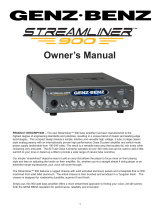 Genz-Benz Musical Instrument Amplifier 900 User manual
Genz-Benz Musical Instrument Amplifier 900 User manual
-
Genz Benz STREAMLINER 900 Owner's manual
-
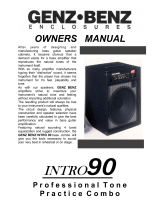 Genz-Benz Intro-50 User manual
Genz-Benz Intro-50 User manual
-
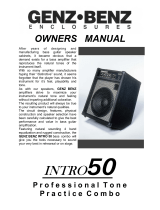 Genz-Benz Intro-50 User manual
Genz-Benz Intro-50 User manual
-
Genz Benz GBEseries 1-210T Owner's manual
-
Genz Benz Shuttle 9.0 Owner's manual
-
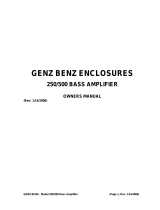 Genz-Benz 250 User manual
Genz-Benz 250 User manual
-
Genz Benz GBE Series 2 Owner's manual
-
Genz Benz GBE 400 Technical Manual
-
Genz Benz Shuttle Max 9.2 Owner's manual
Other documents
-
Vertex Ultraphonix User manual
-
PylePro PVAMP30 Owner's manual
-
PylePro PVAMP20 Owner's manual
-
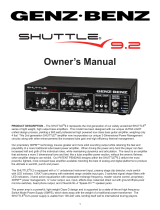 Genz-Benz 9.2 User manual
Genz-Benz 9.2 User manual
-
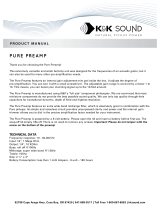 K&K Pure Preamp Installation guide
K&K Pure Preamp Installation guide
-
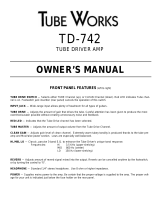 Genz-Benz TD-742 Owner's manual
Genz-Benz TD-742 Owner's manual
-
Vertex Steel String User manual
-
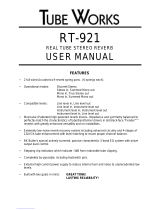 Tube Works RT-921 User manual
Tube Works RT-921 User manual
-
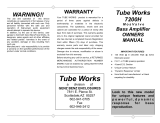 Tube Works 7200H Owner's manual
Tube Works 7200H Owner's manual
-
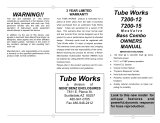 Tube Works MosValve 7200-12 Owner's manual
Tube Works MosValve 7200-12 Owner's manual
















